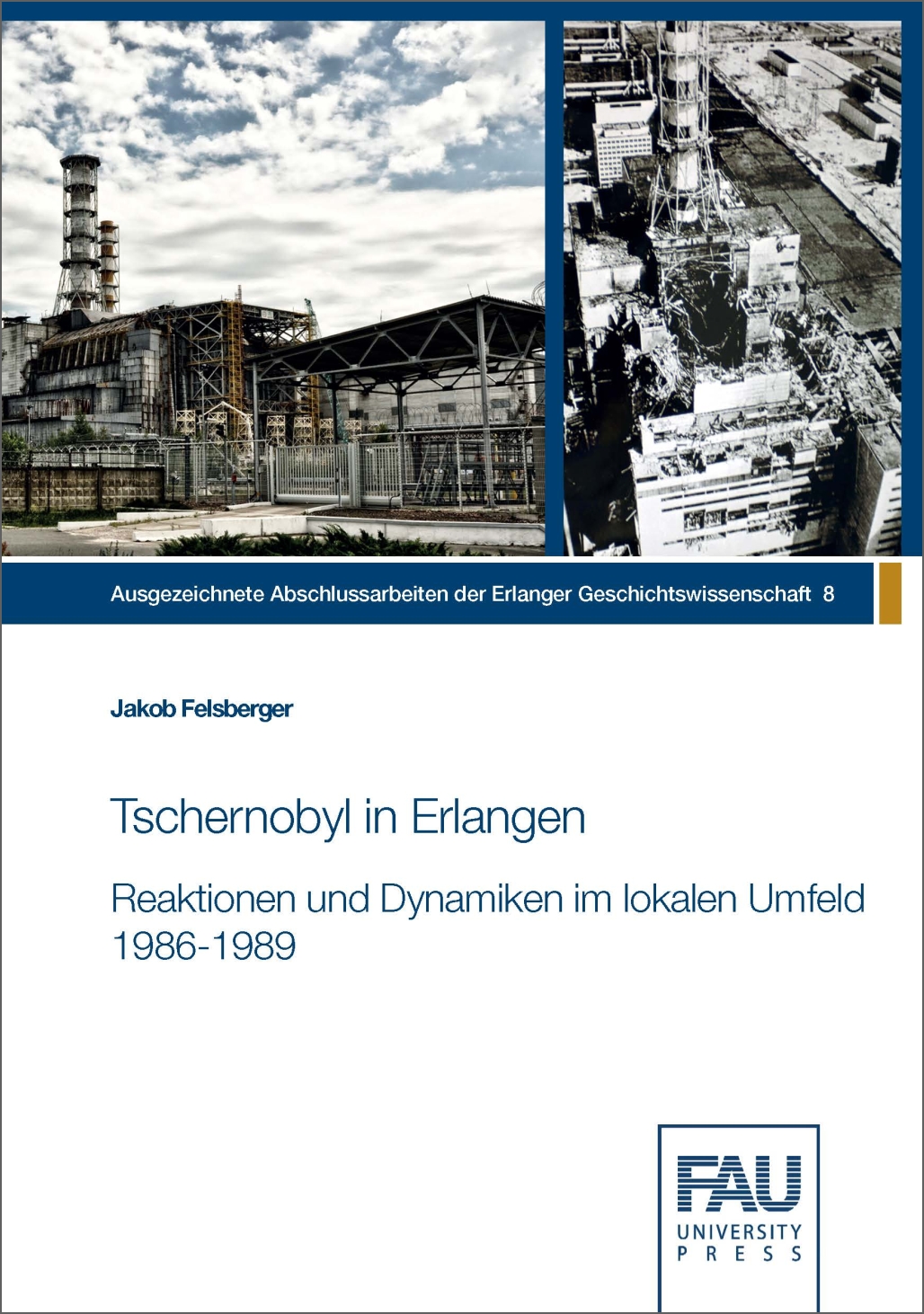Description
On April 24th Reactor 4 of the Chernobyl Nuclear Power Plant exploded as a result of a lethal combination of events. A lackadaisical security culture within the Soviet nuclear industry, construction errors of the reactor type, and human error led to an explosion which saw the burning reactor core spewing extremely radioactive particles into the atmosphere for days. The contamination wasn’t limited to large parts of the Ukraine and Belorussia, as, driven by atmospheric currents, it reached large parts of Europe. Germany wasn’t spared either, especially the south-east of Germany got hit by radioactive rain.
The city of Erlangen in Bavaria was one of many affected, triggering a variety of reactions and developments among the populace. It is one of the main theses of this study that Erlangen is predestined for an investigation of the aforementioned consequences of the Chernobyl disaster due to several factors. The major German manufacturer of nuclear powerplants, the Kraftwerk Union AG (KWU, nowadays Areva) had one of its main research facilities there. The city administration founded a communal task force for dealing with the crisis, which soon assumed a leading role regionally in tackling the literal and nonliteral fallout of Chernobyl. In addition, the catastrophe politicized large parts of the population, especially mothers, which subsequently founded the Society “Mütter gegen Atomkraft” (Mothers against Nuclear Energy). This paper aims to shed light on this intriguing collection of actors and their actions and reactions after the catastrophe of Chernobyl. It examines multiple sources, among them about 2500 newspaper articles about the public debate surrounding Chernobyl, as well as about the problems resulting thereof, such as radioactive sewage sludge and contaminated dried whey. The state government’s handling of the whey issue is akin to classic crime fiction. The partially violent resistance of protesters against the planned construction of the nuclear fuel reprocessing plant Wackersdorf is also investigated, because it was fanned massively by Chernobyl.
A main result of this study is that Chernobyl in Germany was primarily a psychological catastrophe rather than a medical one, as the sensorially not perceptible radiation acted in concert with the rather unfortunate crisis management of federal and state governments to create an unprecedented level and spectrum of fears among Germans. Due to the excellent accessibility to sources of both advocates and adversaries of nuclear energy as well as those of the communal task force, it was possible to shed light on the controversy about nuclear energy which occurred not only in Erlangen, but society-wide all over Germany.


Reviews
There are no reviews yet.